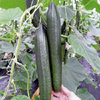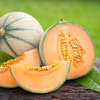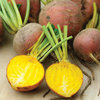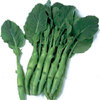Product Categories Vegetable Seeds A-C Carrots Carrot Autumn King 2 Vegetable Seeds
Product Categories Vegetable Seeds A-C Carrots Carrot Chantenay 2 Red Cored 750 Vegetable Seeds
Product Categories Vegetable Seeds A-C Carrots Carrot Early Nantes 2 1400 Vegetable Seeds
Product Categories Vegetable Seeds A-C Carrots Carrot F1 Red Samurai 400 Vegetable Seeds
Product Categories Vegetable Seeds A-C Carrots Carrot Flyaway F1 400 Vegetable Seeds
Product Categories Vegetable Seeds A-C Carrots Carrot Paris Market Atlas 1500 Vegetable Seeds
Product Categories Vegetable Seeds A-C Carrots Carrot Amsterdam Forcing 2 1600 Vegetable Seeds
Product Categories Vegetable Seeds A-C Carrots Carrot Cosmic Purple 700 Vegetable Seeds
Product Categories Vegetable Seeds A-C Carrots Carrot Rainbow Blend 400 Vegetable Seeds
Product Categories Vegetable Seeds A-C Carrots Carrot Berlicum 2 Vegetable Seeds
Carrot Autumn King 2 Vegetable Seeds
Product no.: SEEDV232
In stock
Delivery period: 1 working days
from
£0.86
Price plus VAT, plus delivery
Accessories
| Product | Note | Status | Price | |
|---|---|---|---|---|
|
You may want to also consider this item: |
|
£10.36 * | |
|
Other items you may also want to consider: |
|
from £5.29 * | |
|
* Prices plus VAT, plus delivery
Display accessory details
|
||||
We also recommend
|
Customers who bought this item also bought:
|
You may want to also consider this item:
|
Other items you may also want to consider:
|
* Prices plus VAT, plus delivery
Customers who bought this product also bought
|
|
Carrot Rainbow Blend 400 Vegetable Seeds
from
£0.97
*
|
Climbing French Bean Blue Lake Stringless Seeds
from
£0.97
*
|
|
Cucumber F1 Burpless Tasty Green Vegetable Seeds
from
£1.06
*
|
|
* Prices plus VAT, plus delivery
Browse this category: Carrots
Carrot Chantenay 2 Red Cored 750 Vegetable Seeds
Product no.: SEEDV233
In stock
Delivery period: 1 working days
Accessories
| Product | Note | Status | Price | |
|---|---|---|---|---|
|
You may want to also consider this item: |
|
£10.36 * | |
|
* Prices plus VAT, plus delivery
Display accessory details
|
||||
We also recommend
|
Customers who bought this item also bought:
|
You may want to also consider this item:
|
Other items you may also want to consider:
|
* Prices plus VAT, plus delivery
Customers who bought this product also bought
|
|
Melon Malaga F1 Fruit Seeds
from
£0.84
*
|
Beetroot Boltardy 400 (3.73g's) Vegetable Seeds
from
£0.89
*
|
|
|
Parsnip Javelin F1 Vegetable Seeds
from
£1.16
*
|
* Prices plus VAT, plus delivery
Browse this category: Carrots
Carrot Early Nantes 2 1400 Vegetable Seeds
Product no.: SEEDV234
In stock
Delivery period: 1 working days
We also recommend
|
Customers who bought this item also bought:
|
You may want to also consider this item:
|
Other items you may also want to consider:
|
* Prices plus VAT, plus delivery
Customers who bought this product also bought
|
Climbing French Bean Blue Lake Stringless Seeds
from
£0.97
*
|
|
|
|
Carrot Autumn King 2 Vegetable Seeds
from
£0.86
*
|
Beetroot Boltardy 400 (3.73g's) Vegetable Seeds
from
£0.89
*
|
* Prices plus VAT, plus delivery
Browse this category: Carrots
Carrot F1 Red Samurai 400 Vegetable Seeds
Product no.: SEEDV235
In stock
Delivery period: 1 working days
Accessories
| Product | Note | Status | Price | |
|---|---|---|---|---|
|
Other items you may also want to consider: |
|
£10.36 * | |
|
* Prices plus VAT, plus delivery
Display accessory details
|
||||
We also recommend
|
Customers who bought this item also bought:
|
You may want to also consider this item:
|
* Prices plus VAT, plus delivery
Customers who bought this product also bought
|
Carrot Autumn King 2 Vegetable Seeds
from
£0.86
*
|
|
|
|
|
Onion Sets - Sturon Quality Sets
from
£9.35
*
|
* Prices plus VAT, plus delivery
Browse this category: Carrots
Carrot Flyaway F1 400 Vegetable Seeds
Product no.: SEEDV237
In stock
Delivery period: 1 working days
We also recommend
|
Customers who bought this item also bought:
|
You may want to also consider this item:
|
Other items you may also want to consider:
|
* Prices plus VAT, plus delivery
Customers who bought this product also bought
|
|
|
|
|
|
Climbing French Bean Blue Lake Stringless Seeds
from
£0.97
*
|
* Prices plus VAT, plus delivery
Browse this category: Carrots
Carrot Paris Market Atlas 1500 Vegetable Seeds
Product no.: SEEDV238
In stock
Delivery period: 1 working days
We also recommend
|
Customers who bought this item also bought:
|
You may want to also consider this item:
|
Other items you may also want to consider:
|
* Prices plus VAT, plus delivery
Customers who bought this product also bought
|
|
|
Sweet Pea Heirloom Hot Pinks (65) Seeds
from
£1.26
*
|
|
|
Tasty Mustard Mix Salad Leaf Mix
from
£0.93
*
|
* Prices plus VAT, plus delivery
Browse this category: Carrots
Carrot Amsterdam Forcing 2 1600 Vegetable Seeds
Product no.: SEEDV242
In stock
Delivery period: 1 working days
Accessories
| Product | Note | Status | Price | |
|---|---|---|---|---|
|
Other items you may also want to consider: |
|
from £10.36 * | |
|
* Prices plus VAT, plus delivery
Display accessory details
|
||||
We also recommend
|
Customers who bought this item also bought:
|
You may want to also consider this item:
|
Other items you may also want to consider:
|
* Prices plus VAT, plus delivery
Customers who bought this product also bought
|
|
|
Pea Oregon Sugar Pod Mangetout Vegetable Seeds
from
£1.02
*
|
|
|
|
* Prices plus VAT, plus delivery
Browse this category: Carrots
Carrot Cosmic Purple 700 Vegetable Seeds
Product no.: SEEDV314
In stock
Delivery period: 1 working days
Accessories
| Product | Note | Status | Price | |
|---|---|---|---|---|
|
Other items you may also want to consider: |
|
£10.36 * | |
|
* Prices plus VAT, plus delivery
Display accessory details
|
||||
We also recommend
|
Customers who bought this item also bought:
|
You may want to also consider this item:
|
Other items you may also want to consider:
|
* Prices plus VAT, plus delivery
Customers who bought this product also bought
|
Nero Di Toscana Borecole Curly Kale Veggie Seeds
from
£0.91
*
|
Carrot Rainbow Blend 400 Vegetable Seeds
from
£0.97
*
|
Climbing French Bean Blue Lake Stringless Seeds
from
£0.97
*
|
|
Lettuce Bright & Spicy BabyLeaf Salad Mix Seeds
from
£0.98
*
|
Carrot Autumn King 2 Vegetable Seeds
from
£0.86
*
|
* Prices plus VAT, plus delivery
Browse this category: Carrots
Carrot Rainbow Blend 400 Vegetable Seeds
Product no.: SEEDV325
In stock
Delivery period: 1 working days
from
£0.97
Price plus VAT, plus delivery
Accessories
| Product | Note | Status | Price | |
|---|---|---|---|---|
|
Other items you may also want to consider: |
|
from £10.36 * | |
|
* Prices plus VAT, plus delivery
Display accessory details
|
||||
We also recommend
|
Customers who bought this item also bought:
|
You may want to also consider this item:
|
Other items you may also want to consider:
|
* Prices plus VAT, plus delivery
Customers who bought this product also bought
|
|
|
|
|
|
Biquinho Red "Pearl Peppers" (10) Fruit Seeds
from
£1.13
*
|
* Prices plus VAT, plus delivery
Browse this category: Carrots
Carrot Berlicum 2 Vegetable Seeds
Product no.: SEEDV394
In stock
Delivery period: 1 working days
from
£0.89
Price plus VAT, plus delivery
Accessories
| Product | Note | Status | Price | |
|---|---|---|---|---|
|
Other items you may also want to consider: |
|
from £10.36 * | |
|
* Prices plus VAT, plus delivery
Display accessory details
|
||||
We also recommend
|
Customers who bought this item also bought:
|
You may want to also consider this item:
|
Other items you may also want to consider:
|
* Prices plus VAT, plus delivery
Customers who bought this product also bought
|
|
Lettuce Little Gem Vegetable Seeds
from
£1.03
*
|
|
|
|
|
* Prices plus VAT, plus delivery
Browse this category: Carrots














 5 x Propagator Sets Full Standard Seed Trays V25
5 x Propagator Sets Full Standard Seed Trays V25 Square 11cm Black Plant Pots Volume 1L
Square 11cm Black Plant Pots Volume 1L


























 5 x Propagator Sets Full Standard Seed Trays V20
5 x Propagator Sets Full Standard Seed Trays V20




















 Propagator Sets Full Standard Seed Trays V8
Propagator Sets Full Standard Seed Trays V8








 5 x Propagator Sets Full Standard Seed Trays V24
5 x Propagator Sets Full Standard Seed Trays V24














